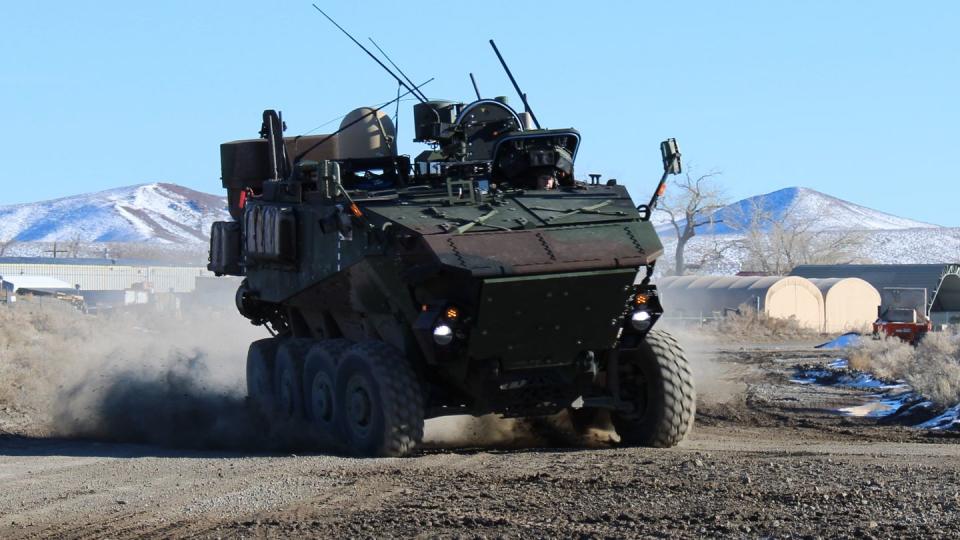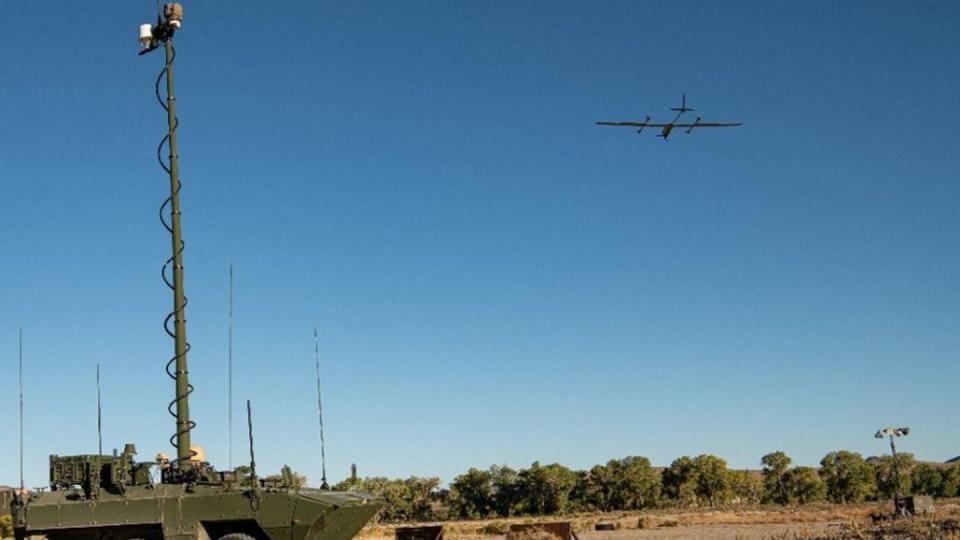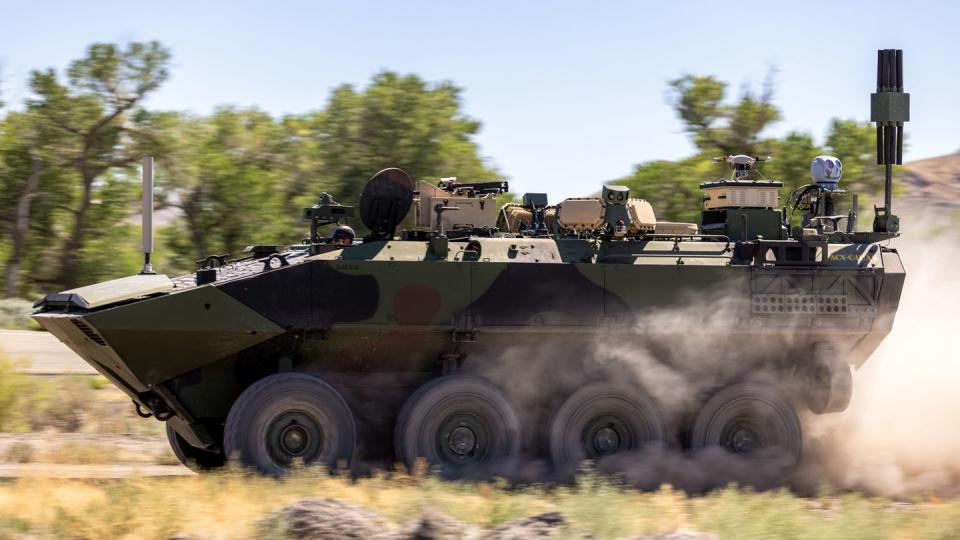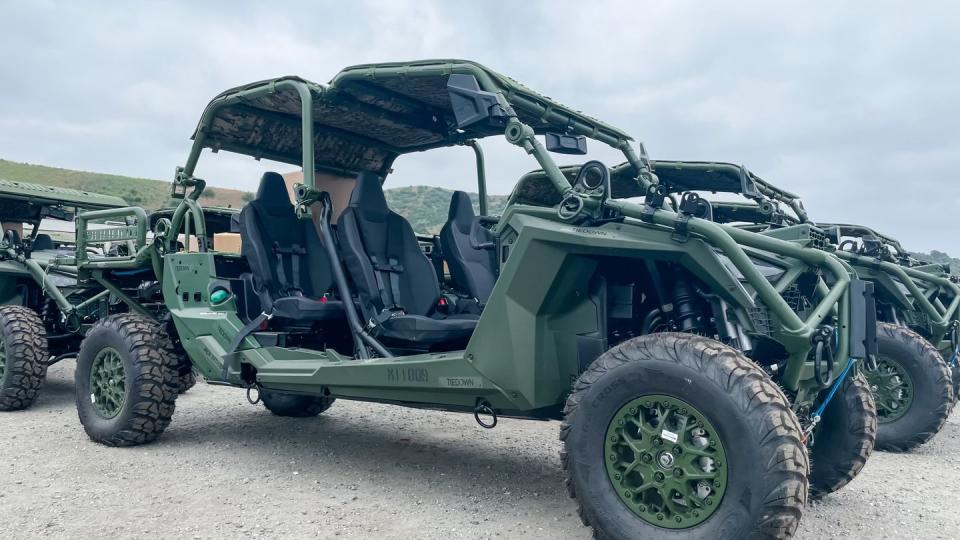Recon vehicle competitors maintain tempo, despite program uncertainty
WASHINGTON — The U.S. Marine Corps wants manufacturers to “go full speed” in developing a new reconnaissance vehicle, despite having no concrete quantity in mind and potentially needing fewer than anticipated.
But industry appears undeterred.
The service announced in its spring update to the Force Design 2030 modernization plan that it discovered a “requirement for littoral, multi-domain reconnaissance capabilities that our light armored reconnaissance (LAR) battalions do not currently provide.”
Future mobile reconnaissance battalions are expected to conduct littoral, multidomain missions with the Advanced Reconnaissance Vehicle, a program in development to replace the legacy Light Armored Vehicle. General Dynamics Land Systems and Textron designed prototypes from scratch, and BAE Systems modified its Amphibious Combat Vehicle to meet mission needs. All three prototypes are in testing at Camp Pendleton, California.
But the battalions may also need light and ultralight tactical vehicles, small boats, and more to conduct multidomain operations, several force development leaders said while rolling out the Force Design update.
Lt. Gen. Karsten Heckl, the deputy commandant for combat development and integration, said a mobile reconnaissance battalion might look different based on the geography to which it deploys. While something like an Advanced Reconnaissance Vehicle, or ARV, could fit operational needs in the Middle East, Africa or Europe, he told Defense News, it may not do well in the Pacific region. This calls into question how many ARVs the Marines will ultimately buy, if only a subset of the Corps’ mobile recon teams will use the in-development vehicle.
Gen. David Berger, who spoke at the Modern Day Marine conference shortly before stepping down as commandant and retiring, told Defense News “we don’t know yet” what the change to the Mobile Reconnaissance Battalion concept will mean for the ARV program, nor how many the Marines might buy.
“What we do know is that the traditional ground reconnaissance, which I grew up in, and airborne reconnaissance and reconnaissance over the water or under the water can’t be three separate units,” he said. “So right now all three [Marine expeditionary forces] are working on multidomain reconnaissance” to determine what combination of land vehicles, boats and aircraft they’ll need.

Berger said he didn’t know what the right balance would be, but that the Corps would spend the next couple years working that out.
“But it’s not just one of them; it’s clear to us that capability has to be all three: aviation, ground, and some kind of [operationally manned] vessel,” he said. “Too early to tell what it means for the total number of ARVs that we might buy — way too early to tell. Right now, go full speed, but allow the [Marine expeditionary forces] to try to sort through how much of each are they going to need in the future organically.”
In a separate panel at the conference, Steve Bowdren, the Corp’s program executive officer for land systems, acknowledged that “we’re some time away from the requirements refinement” for ARV, given the newly released ideas about the mobile reconnaissance battalion.
ARV competitors
Despite uncertainty, industry heard Berger’s “go full speed” comment and intends to do just that.
Since BAE Systems, General Dynamics Land Systems and Textron Systems handed over their respective prototypes in December, the Marine Corps has put the platforms through land mobility testing at the Nevada Automotive Test Center; survivability testing at Aberdeen Proving Ground in Maryland; open ocean and surf zone swim tests at the Amphibious Vehicle Test Branch at Camp Pendleton, California; and now electronics testing at the Marine Corps Tactical Systems Support Activity at Camp Pendleton.
During these months of testing, some of the tiered requirements for the ARV prototype took on greater or lesser importance, David Phillips, the senior vice president for sea and land at Textron Systems, told Defense News.
Weight and size are not negotiable, with the Corps requiring four ARVs fit on a Ship to Shore Connector, he said. However, that led to a discussion about survivability and other requirements that ultimately affect the vehicle’s weight.
“We’ll come out of this knowing there’s things we’re going to have to go do as we look towards [the engineering and manufacturing development phase]” based on lessons that come out of the testing and changes to requirements.

Asked how the company views the uncertainty about the ARV program in light of the new Mobile Reconnaissance Battalion concept, Phillips said the Marine Corps continues to show “commitment to the program.”
“We’re confident we can deliver a vehicle that’s going to meet their top-tier requirements. We’re confident that things that exist right now cannot,” he said. “That’s how we’re emboldened and confident that ultimately this thing goes to that next phase.”
Phillips added that it’s common not to know exactly how many vehicles the military might buy upfront. Despite that uncertainty, “we said years ago this is a very, very critical thing for us to go chase and to go win, so we’re committed to that.”
Phil Skuta, the director of strategy and business development for U.S. Marine Corps and Navy programs at General Dynamics Land Systems, said budget documents show a competition for the engineering and manufacturing development phase slated for fiscal 2025 — or two years from now. But what he wants sooner is a clear decision to move forward with the program despite Force Design’s changes to the reconnaissance community.
He noted congressional testimony and other statements this spring from Heckl and Assistant Commandant Gen. Eric Smith that showed support for ARV.
“We read that, we listen to that very closely, and it gives us optimism that we can anticipate continuing forward, at least in this competition, and working with the Marine Corps to meet the requirements on this capability,” Skuta said.

The Marine Corps envisions ARV as a family of vehicles, with a common chassis but different mission systems on as many as six variants:
Command, control, communications, computers and unmanned aerial systems, or C4/UAS, represented by the three prototypes in testing.
Logistics
30mm cannon.
Recovery.
Counter-drone.
Organic precision fires.
Mark Brinkman, BAE Systems’ program director for the ARV effort, said his company is investing its own dollars to “try to stay half a step ahead of the Marine Corps” and help the service refine its requirements for these variants.
BAE Systems took its ACV baseline vehicle design and outfitted it with C4/UAS mission gear for its prototype. But the ACV program itself is a family of vehicles, and the company is already in the process of designing and testing a 30mm cannon variant and a recovery variant as part of the ACV contract.
Through its own investment, the company has drawn a concept of an organic precision fires variant and will mature an idea for the logistics version, leaving just one remaining.
“There’s a lot of goodness in commonality” between the ACV and ARV programs, he said, not least of which includes the ability to design and field the mission variants on a faster timeline.
A smaller vehicle option
The Marines are clear they’re committed to the ARV for some geographies. But Heckl said perhaps a large vehicle, and the maintenance and spare parts associated with it, may not do well for Marines flying from island to island in the Pacific.
One company that could benefit from this discussion is Polaris, whose MRZR Alpha light tactical all-terrain vehicle won a contract with U.S. Special Operations Command in 2020. That seven-year deal has helped the Marine Corps replace its old utility vehicles, with Polaris delivering its first vehicles to 1st Battalion, 5th Marines at Camp Pendleton in June.

Nick Francis, the vice president of government and defense at Polaris, told Defense News the company’s Minnesota production line could build as many as 1,500 vehicles a year, which leaves plenty of room for additional orders as the Corps reconsiders how to move around light reconnaissance forces.
Polaris is building a high-power variant of its MRZR Alpha to expand how operators could use the vehicle. This variant will have batteries that can run counter-drone systems, command-and-control technology, and other offensive and defensive systems that need a lot of power and may need to run even while the vehicle is off.
The high-power variant has been through several design reviews, Francis said, and must go through testing across the entire operating profile of ultralight tactical vehicles — including challenging terrains — to prove its reliability.
That validation testing will begin later this year and stretch into 2024, he said. Pending successful test results, Polaris will begin offering the high-power variant to the Marine Corps and Special Operations Command next year.
The company is also in the early phases of designing a hybrid and an all-electric variant of the MRZR Alpha, Francis added.
Mark Schmidt, Polaris’ defense programs manager, said the company hadn’t had “any deliberate conversations” with the Marine Corps about applying the MRZR Alpha to the mobile reconnaissance battalion mission, but he said the vehicle has a low signature and is mobile enough to be “a great fit for that.”

